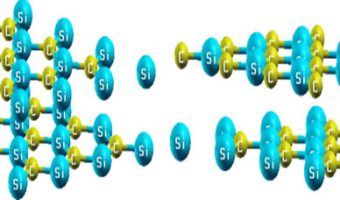Nuclear power is in decline, even in the novel conditions of planetary turmoil due to global warming and sanctions against Russia, while nuclear guild is talking about “Nuclear renaissance”, bluntly omitting the causes of nuclear power decay. Nuclear people are the most conservatives and they drastically oppose to any revolutionary change in nuclear power, because […]
Category: ANE
Anca Elena SLOBOZEANU, Ioan Albert TUDOR, Radu-Robert PITICESCU, Maria Dolores ROMERO-SANCHEZ; Modelling the thermal properties of micro-encapsulated phase change materials; Advanced NanoMaterials and Technologies for Energy Sector; 2020:4(1): 307-318
An important class of materials that contribute substantially to the efficient use and conservation of waste heat and solar energy is the phase change materials (PCMs) used for thermal energy storage. Higher energy storage density is provided by latent heat storage, with a lower temperature difference between storage and release heat than the sensitive heat […]
Mohamed Houmad, Maryama Hammi, Abdallah El Kenz, Abdelilah Benyoussef; Effect of inter-distance on band gap of silicon carbide bilayers; Advanced NanoMaterials and Technologies for Energy Sector; 2019:3(4): 298-306
The structural stability and the total energy of silicon carbide like bilayers have been investigated using ab initio calculations. Firstly, we studied all configurations of silicon carbide like bilayers then we have varied the vertical distance d in all configurations staking AA and AB arrangement. Also, we have discussed the effect of vertical distance d […]
Kelvii Wei GUO; Methodologies for achieving 1D ZnO nanostructures potential for solar cells ; Advanced NanoMaterials and Technologies for Energy Sector; 2019:3(3): 280-297
One-dimensional (1D) nanostructures are generally used to describe large aspect ratio rods, wires, belts and tubes. The 1D ZnO nanostructures have become the focus of research owing to its unique physical and technological significance in fabricating nanoscale devices. When the radial dimension of the 1D ZnO nanostructures decreases to some lengths (for example, the light […]
Amin Izadpanahi, Reza Azin, Shahriar Osfouri, Reza Malakooti Modelling of Asphaltene Precipitation in a Light Oil Reservoir with High Producing GOR: Case Study; Advanced NanoMaterials and Technologies for Energy Sector; 2019:3(2): 270-279
Asphaltene precipitation is an important phenomenon faced during oil production that causes many problems such as plugging the reservoirs, production wells, and transmission pipelines. Therefore, it is necessary to predict the asphaltene precipitated as a function of temperature and pressure. The aim of this study is to investigate the effect of pressure and temperature on […]
Dimitry MILOVZOROV; Field-assisted restoration the crystal phase from amorphous in silicon; Advanced NanoMaterials and Technologies for Energy Sector; 2019:3(2): 255-269
Local electric fields are appeared in dielectric and semiconductors due to the destruction of symmetry, creating the vacancies, point defects and chemical impurities in material. By increasing in external electric field value there are numerous structural changes will be generated. Some of them will produce such great local fields that will destroy all material or […]
Fatemeh OMRANINASAB, Fouziyeh HAJIZADEH, Ahmad JAMEKHORSHID; Process Optimization and Modeling of Salt Hydrates based on Na2SO4.10H2O as Phase Change Materials using Response Surface Methodology; Advanced NanoMaterials and Technologies for Energy Sector; 2019:3(1): 247-254
Nowadays, due to limited energy reserves that are available, saving energy in appropriated form is becoming a challengeable subject. One of the new and efficient ways in the field of thermal energy storage (TES) is using of phase change materials (PCM). This paper was examined the effects of two variables including weight percentage of Borax […]
Liviu POPA-SIMIL; Potential shielding applications of radiation guiding nano-structured meta-material; Advanced NanoMaterials and Technologies for Energy Sector; 2018: 2(3): 227-237
The development of novel nuclear-nano-materials found applications in nuclear fuels, and structural materials are paving the way for near-perfect burnap; with minimal recladding and easy fuel processing, fission products, self-separation based on nuclear reactor kinematics, with easy separation, partitioning and dispositioning, transmutation products enhanced extraction assuring super grade purity, direct nuclear energy conversion in super-capacitor […]
Shrok Allami, Haider Hamody, Basher Hasan, Motawer Redah; Hydrogen storage in vessel filled with Iraqi activated carbon; Advanced NanoMaterials and Technologies for Energy Sector; 2018: 2(1): 221-226
Currently, there is a new attention to find a safe and efficient method to store hydrogen due to difficulties associated with compressed and liquidated methods. One of these methods is a solid-state storage by both chemisorption and physisorption. In this work, microporous activated carbon was prepared from Iraqi charcoal via chemical activation with KOH. Structural […]
Prashant Jindal, Girija S. Dubey, Rajiv Bhandari, Neha Dhiman, Chetna Bajaj and Vijay Kumar Jindal; Thermal Conductivity behaviour of MWCNT based PMMA and PC composites; Advanced NanoMaterials and Technologies for Energy Sector; 2018:2(1): 216-220
Poly methyl methacrylate (PMMA) and Polycarbonate (PC) are low cost polymer materials which can be easily transformed into desired shapes for various applications. However, they have poor mechanical, thermal and electrical properties which are required to be enhanced to widen their scope of applications specifically where along with high strength, rapid heat transfer is essential. […]

